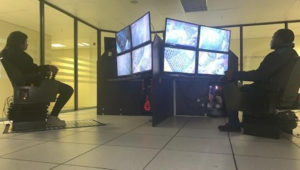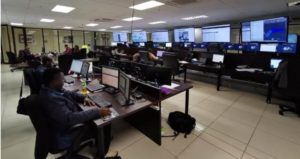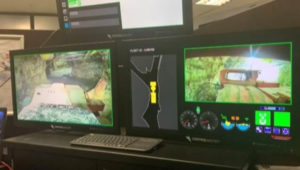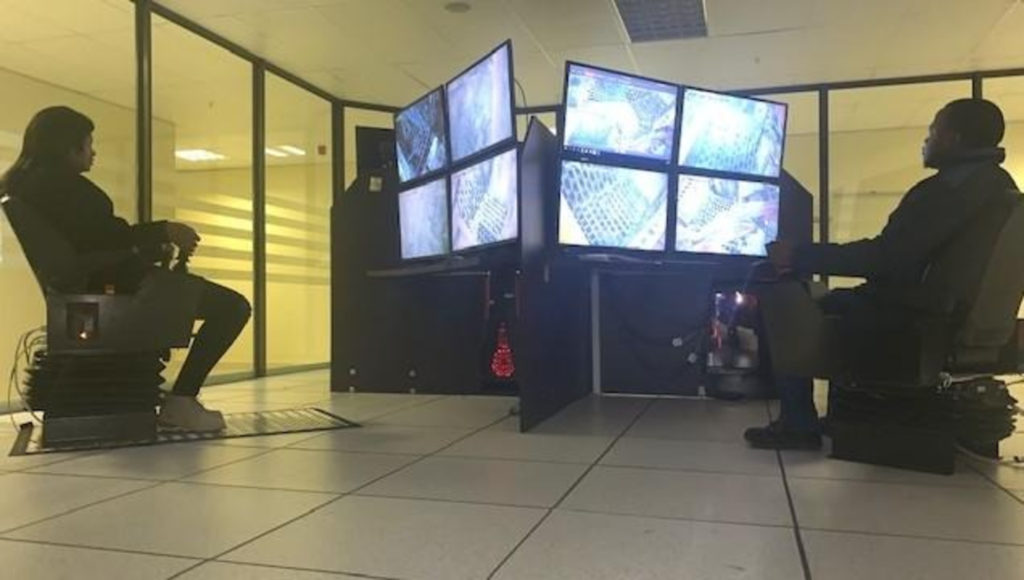As mines continue to increase their levels of mechanisation and automation, the importance of control rooms in providing situational awareness, and as the hub of operations management, is proportionally increasing, Tendayi V Mwayi*, Mobilaris MCE Sales and Business Development, Africa, at Epiroc’s Underground Rock Excavation division, says.
Control rooms collect, analyse and relay information necessary to monitor, measure and report performance, and control processes in mining operations. In its most modest form, a control ‘room’ can take the form of a desk in a quiet corner of a planning room equipped with a two-way radio and a desktop computer to record and report information from operations and relay information between operational units.
The more advanced control rooms, a couple of examples of which are showcased below, feature communications infrastructure; people and material tracking and visualisation tools; and planning, scheduling and optimisation systems that would closely rival the capabilities of those employed in the most advanced manufacturing and processing operations, Mwayi says.
In the West Rand Goldfields of South Africa, the 3 km-deep South Deep mine has constructed the South Deep Control Centre to “manage and monitor all operations (at its flagship Twin Shafts complex) from a central point”, Johan Sliep, Head of Technical and Production Intelligence Systems for Gold Fields Group Services, says. This is all tied to “improving the effectiveness and efficiency of operators through informed decision making”, he added. “This is where everything integrates.” 
After one-and-a-half-years of construction, the ZAR2.5 million ($144,610) project is nearing completion.
In its final state, the state-of-the art control centre will provide overarching visualisation and control over all operations – including production, plant and logistics – centrally to deliver on South Deep’s strategic positioning as a highly efficient, safe, low cost, fully mechanised, world-class operation, Mwayi says.
The capabilities built into the South Deep control centre include mine planning, production scheduling, fixed plant management, safety management, production monitoring and control, backfill management, breakdown and planned maintenance management, processing and remote operations and analytics.
These systems rely on a fibreoptic backbone down the shaft and a blend of standard Wi-Fi and proprietary wireless mesh for communication of operational data from various sources. Additionally, an expansive network of leaky feeder supports voice communication over two-way radio in all areas of the vast underground mine.
Sliep reflected: “Every technology deployment has a business case associated unless it is a foundational requirement such as (communication) infrastructure, which on its own has a limited business case value.” Or, as Peter Burman, Program Manager – Mine Automation at Boliden Mine, puts it: “A communication infrastructure is nothing you should try to create a business case upon; that is stupid. A communication infrastructure is imperative to survival in today’s automated underground mines. It is like trying to create a business case for the sun or the air; it is simply a thing we need (in order) to survive.”
Tagging and tracking systems enable effective safety management from a central control room through real-time location tracking of personnel and equipment, which is often used to augment legacy clock-in, clock-out systems.
The improved situational awareness from systems such as Mobilaris Mining Intelligence reduces operational delays during normal operations, allows shafts to be cleared faster prior to blasting and reduces the duration of rescue missions when accidents occur by providing vital decision support to control room operators, Mwayi says.
Proximity detection systems together with the vehicle mounted collision avoidance systems, which original equipment manufacturers (OEMs) such as Epiroc now include as standard features on equipment, warn mine operators and pedestrians of potential person-to-vehicle or vehicle-to-vehicle interactions within a radius of up to 100 m. However, the situational awareness from Mobilaris Mining Intelligence extends the range of traffic awareness for control room operators, mine operators and pedestrians alike, providing the exact identity, location and direction of travel of people and vehicles in the entire mine, according to the company. This is achieved through the high-precision positioning and decision-support capabilities of Mobilaris Situational Awareness, Mobilaris Onboard and Mobilaris Pocket Mine, Mwayi said.
When quizzed about what is on his wish list for the South Deep Control Centre, Sliep suggests that “full operational control and management of operations” would be the ideal end goal for the mine.
What would that look like exactly and how could it be achieved?
Hans Wahlquist, VP Business Development & Strategic Product Management for Mobilaris MCE, explains: “Mobilaris Mining Intelligence is on the verge of launching a solution that would unlock the next level of control room capabilities in its innovative Mobilaris Event Automation platform which gives additional functionality to its already impressive Mobilaris Mining Intelligence product family.”
Wahlquist describes Mobilaris Event Automation as a tool to enable mine engineers to make full use of the information that comes from: location data of machines, equipment, materials and personnel; the status of work tasks in the shift plan; sensory data from various monitoring systems; machine data from a mixed fleet; and much more, by enabling engineers to create tailored automated actions themselves.
“With this feature, we give mines the power to take mine control to the next level,” Wahlquist says.
Event Automation, which is already deployed at Mobilaris’ first customers for the platform, would allow automated actions to be triggered when a defined set of causal events occur, for example, the switching on of a ventilation fan when threshold limits of carbon dioxide gas are detected, or the dispatch of a work order to a loader operator when a bolting activity is reported as completed.
“The beauty of the platform lies in the ability of mining personnel to ‘create’ the commands defining the cause and effect actions themselves,” Mwayi said.
Mwayi concluded: “Clearly, from the cases above, mining companies and OEMs that have embraced digital technology and evolved their operations; up-skilled, cross-skilled and re-organised their workforce enabling the use of technology that will inevitably be common place across all mines in the next three to five years, are achieving operational excellence in this industry 4.0 age.”
*This is an edited version of an article from Tendayi V Mwayi











